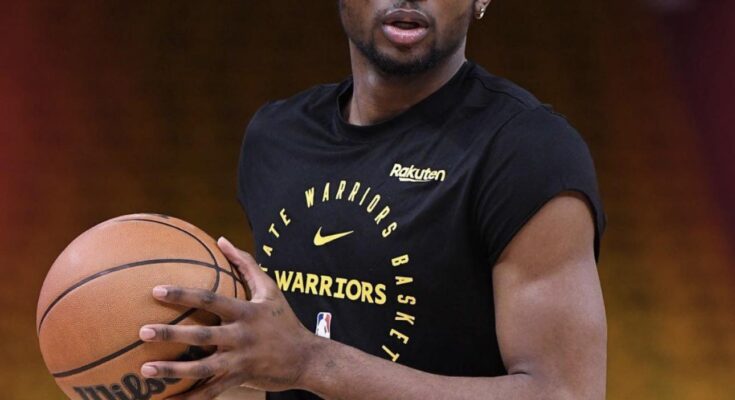Breaking: The Golden State Warriors offered Jonathan Kuminga $40 million for two years, but he declined.
The recent news about Jonathan Kuminga and the Golden State Warriors has certainly stirred conversations across the NBA community. The Warriors reportedly offered Kuminga a contract worth \$40 million over two years, a sizable commitment reflecting the team’s belief in his potential and value. Yet, in a move that surprised many, Kuminga chose to decline this offer, prompting speculation and analysis about the implications for both the player and the franchise.
Jonathan Kuminga, a young and talented forward, has been seen as a crucial part of the Warriors’ future since they drafted him. His blend of athleticism, versatility, and defensive prowess make him an intriguing prospect in the league. For the Warriors to extend a two-year deal worth \$40 million indicates they view him as someone who can contribute significantly to their championship aspirations. But the fact that Kuminga declined the offer reveals layers of strategy and ambition that go beyond the surface.
Declining such a lucrative contract often suggests a player’s confidence in their ability to secure a more advantageous deal, whether financially, in terms of role, or in alignment with career goals. Kuminga’s decision could signal his belief that his current value in the market exceeds what the Warriors proposed. It may also highlight his desire for a longer-term contract that provides more stability or better aligns with his vision for his professional trajectory.
From the Warriors’ perspective, offering \$40 million over two years is a substantial investment but also a calculated risk. The franchise has historically balanced investing in proven stars with developing young talent through contracts that encourage growth and maintain financial flexibility. In Kuminga’s case, the offer likely represented a midpoint between rewarding his contributions and managing the salary cap space for future roster moves.
The dynamics of this negotiation reflect the evolving nature of player contracts in the NBA, where young players with promising upside weigh immediate financial security against the potential for bigger paydays down the line. For Kuminga, who has shown flashes of brilliance but is still developing consistency, the decision to reject the Warriors’ offer could be a bet on himself to increase his market value during the next season.
This move also shifts the conversation around the Warriors’ roster construction. The team must now consider how to navigate the uncertainty surrounding Kuminga’s contract status. They could decide to revisit negotiations with revised offers or explore alternative strategies such as trade options if it appears a longer-term deal is not forthcoming. This situation introduces a new layer of complexity to the Warriors’ planning as they seek to maintain their competitive edge.
In the broader context of the NBA, Kuminga’s choice to decline a lucrative offer from a championship contender sends a message about player empowerment. More young players are recognizing their leverage and the importance of controlling their career narratives. By standing firm, Kuminga aligns himself with a growing trend where athletes prioritize long-term value and fit over immediate gains.
Furthermore, the Warriors’ willingness to offer such a deal underscores how teams are competing to retain young talent amid a shifting salary cap landscape. The increasing financial stakes make decisions like this pivotal, not just for the individual and team involved but for how franchises build their rosters in an environment that demands balancing star power, depth, and flexibility.
Analyzing Kuminga’s career trajectory sheds light on why he might feel confident enough to decline. Since entering the league, he has demonstrated growth in his scoring ability, defensive impact, and overall presence on the court. If he continues on this upward trajectory, his value could substantially increase, potentially leading to a more lucrative long-term deal that rewards his development and contributions.
However, this path is not without risks. Declining a secure offer places pressure on Kuminga to perform at a high level consistently. Injuries, changes in team dynamics, or shifts in market demand could impact his bargaining position. Yet, his willingness to take this risk reflects a mindset focused on maximizing his potential earnings and career satisfaction.
The Warriors, on their part, will have to balance patience with pragmatism. Maintaining a good relationship with Kuminga is crucial, as is communicating clearly about the team’s vision for him. The franchise has historically excelled in developing young talent within a winning culture, and how they handle this situation will be telling of their approach to roster management moving forward.
It is also worth noting the influence of agents and advisors in such negotiations. The decision to decline a significant offer is rarely made in isolation; it involves weighing market trends, comparable player contracts, and timing. Kuminga’s camp likely analyzed various scenarios, factoring in his performance metrics, potential growth, and the league’s economic environment before arriving at this conclusion.
This development could also spark interest from other teams. If Kuminga becomes a free agent or seeks a sign-and-trade scenario, his availability might attract contenders looking to add a versatile young player to their ranks. This prospect adds another strategic dimension to the Warriors’ considerations, as they evaluate whether retaining Kuminga aligns best with their championship goals or if trading him could provide valuable assets.
The narrative around Kuminga’s decision also intersects with the Warriors’ current team composition. With established stars like Stephen Curry, Klay Thompson, and Draymond Green, the team’s success hinges on integrating younger players like Kuminga into roles that complement their veteran core. How the Warriors manage this balance while navigating contract negotiations will impact their future competitiveness.
From a fan perspective, the news is a mixture of excitement and uncertainty. Kuminga’s potential is undeniable, and seeing him possibly leverage his worth can be inspiring. However, fans also want to see the team retain its core pieces and continue pursuing championships. The unfolding situation adds drama and anticipation to the offseason narrative.
In summary, Jonathan Kuminga’s decision to decline a \$40 million two-year offer from the Golden State Warriors is a significant moment in both his career and the team’s trajectory. It highlights themes of player empowerment, strategic contract negotiations, and the delicate balance franchises must maintain between investing in talent and managing financial realities. As the situation evolves, it will be fascinating to observe how Kuminga’s confidence and the Warriors’ strategy play out in shaping the next chapter of their shared journey in the NBA.



